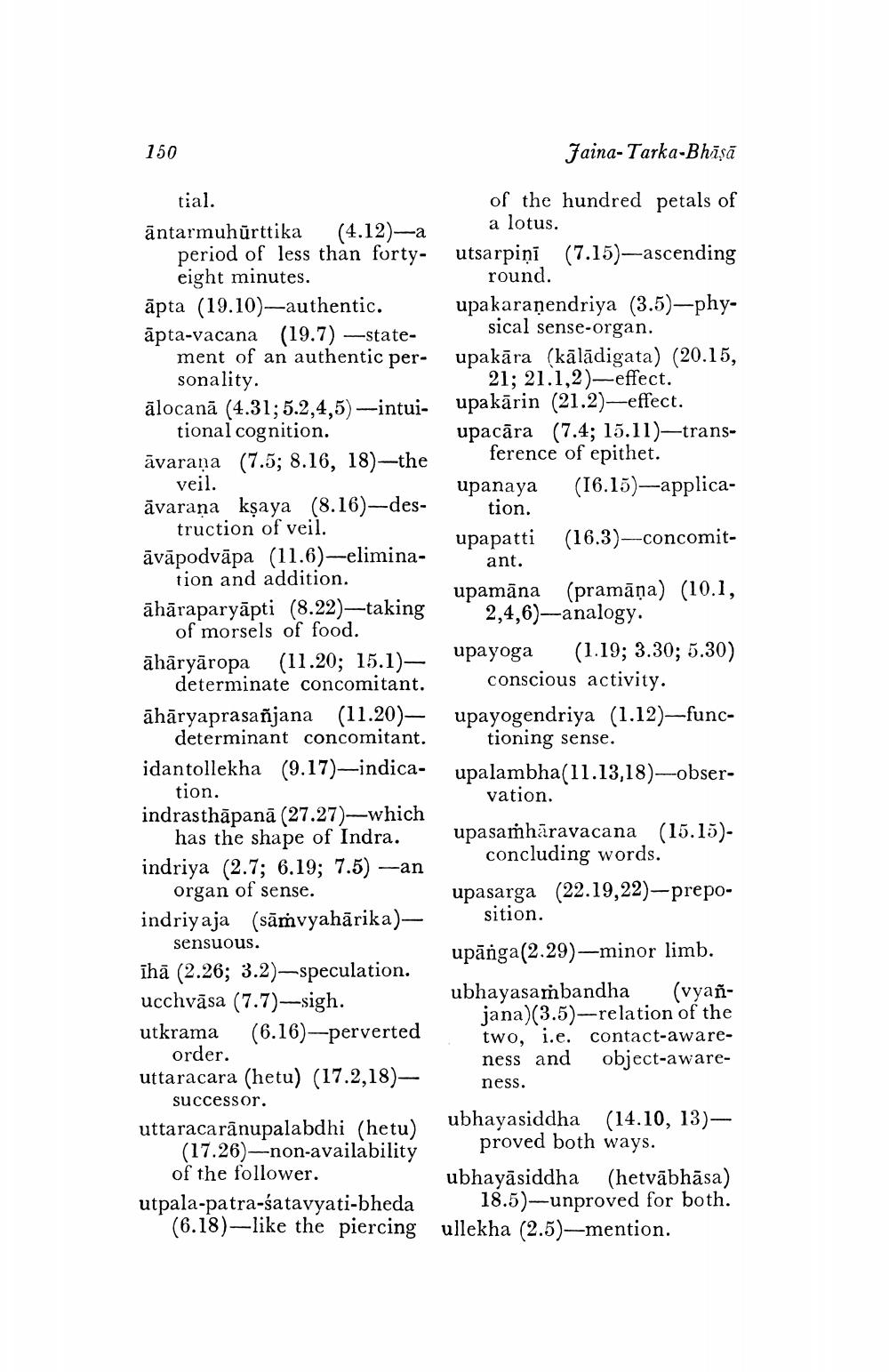________________
150
Faina-Tarka-Bhāṣā
tial.
of the hundred petals of āntarmuhūrttika (4.12)-a
a lotus. period of less than forty- utsarpiņi (7.15)—ascending eight minutes.
round. āpta (19.10)—authentic. upakaraṇendriya (3.5)-phyāpta-vacana (19.7) -state
sical sense-organ. ment of an authentic per- upakāra (kālādigata) (20.15, sonality.
21; 21.1,2)-effect. ālocanā (4.31;5.2,4,5)-intui- upakārin (21.2)-effect. tional cognition.
upacāra (7.4; 15.11)-transāvaraņa (7.5; 8.16, 18)—the
ference of epithet. veil.
upanaya (16.15)-applicaāvarana kşaya (8.16)-des
tion. truction of veil.
upapatti (16.3)--concomitāvāpodvāpa (11.6)--elimina
ant. tion and addition.
upamāna (pramāņa) (10.1, āhāraparyāpti (8.22)—taking
2,4,6)--analogy. of morsels of food. āhāryāropa (11.20; 15.1)— upayoga (1.19; 3.30; 5.30) determinate concomitant.
conscious activity. āhāryaprasañjana (11.20)— upayogendriya (1.12)—func
determinant concomitant. tioning sense. idantollekha (9.17)-indica- upalambha(11.13,18)-obsertion.
vation. indrasthāpanā (27.27)—which has the shape of Indra. upasaṁhäravacana (15.15)
concluding words. indriya (2.7; 6.19; 7.5) -an organ of sense.
upasarga (22.19,22)-prepoindriyaja (sāmvyahārika) - sition. sensuous.
upānga(2.29)-minor limb. īhā (2.26; 3.2)-speculation.
ubhayasambandha ucchvāsa (7.7)-sigh.
(vyañ
jana) (3.5)-relation of the utkrama (6.16)-perverted two, i.e. contact-awareorder.
ness and object-awareuttaracara (hetu) (17.2,18)—
ness. successor. uttaracarānupalabdhi (hetu)
ubhayasiddha u
(14.10, 13)(17.26-non-availability
proved both ways. of the follower.
ubhayāsiddha (hetvābhāsa) utpala-patra-śatavyati-bheda 18.5)-unproved for both.
(6.18)-like the piercing ullekha (2.5)-mention.




